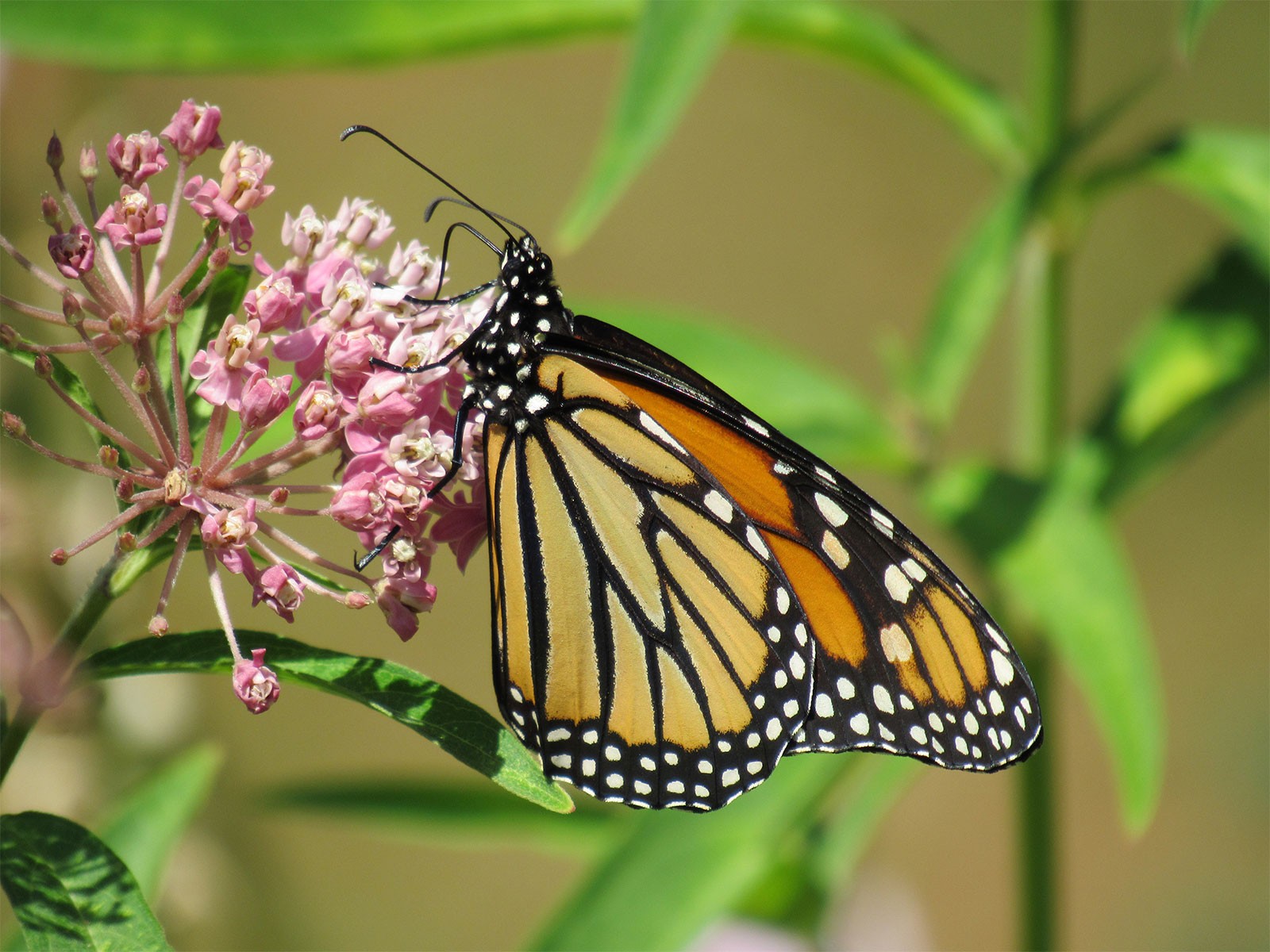A new study led by ecologists at the University of Georgia reveals that monarch butterflies tolerate exposure to a widely used class of insecticides surprisingly well—and those insecticides are probably not responsible for recent declines in North American monarch migration.
Published in Ecological Entomology, the study explores how monarch butterflies are affected by neonicotinoids, the most widely used class of insecticides in the world. Results indicated that adult monarchs are more tolerant of two neonicotinoids—clothianidin and imidacloprid—than indicated by previous research. They also tolerate exposure to these chemicals far better than bees.
“We were surprised to see that monarchs could feed, for over a week, on levels of neonicotinoids known to immobilize and kill bumblebees after a single feeding, and still not show evidence of loss of function or impairment,” said Sonia Altizer, senior author on the study and Georgia Athletic Association Professor of Ecology at UGA. “Given the known effects of exposure to these pesticides for insect mobility, we had predicted that field-relevant doses could be responsible for declines in monarch migration.”
During their annual migration to wintering sites in Mexico, monarch butterflies encounter perils including vehicles, storms, droughts and predators. Another potential threat is the insecticides used to deter pest insects, which can also affect non-target, nectar-feeding insects like bees and butterflies.

Starting in the mid-1990s, neonicotinoids—a popular type of persistent synthetic insecticides—began to be widely used. Neonicotinoids are well known to cause harm to other wild insects such as bees, and their use has been linked to declines in numerous insects and even bird species.
In this study, the researchers fed monarchs artificial nectar spiked with increasing doses of two commonly used neonicotinoids, imidacloprid and clothianidin, over a series of 10 days. They then measured the butterflies’ survival, reproduction, flight and behavior.
“First, we fed adult monarchs artificial nectar solutions, the upper limits of which exceed field-relevant neonicotinoid doses by five to seven times. This slightly reduced monarch reproduction, but didn’t lower monarch survival, weight gain or activity levels,” said first author Cody Prouty, who conducted this work while a master’s student at UGA. “Second, we fed monarchs much higher clothianidin doses that exceeded field levels by nearly 100 times. These higher doses reduced monarch nectar consumption, survival, flight performance and reaction time.”
Results showed that adult monarchs tolerated field-relevant doses of imidacloprid and clothianidin with minimal negative effects until much higher—and likely unrealistic—doses were supplied. A prior study reported 78% adult mortality at 23.5 ng/ml imidacloprid. In contrast, the new study shows that monarchs can tolerate 16 times higher rates of imidacloprid, up to 386 ng/ml—far more than the highest documented field residue of 72.8 ng/ml.
Monarch butterflies are well studied for their ability to tolerate and sequester other toxic chemicals found in their food plants (such as cardenolides in milkweeds) and may be “better equipped” to deal with certain pesticides, according to Altizer. Although these data demonstrate higher tolerance of adult butterflies to neonicotinoids, there are many other pesticides that drift onto wildflowers and into water that can affect many insects.
Most neonicotinoid insecticides are applied to the soil, and then the insecticide moves with water as runoff. However, foliar applied insecticides, fungicides and herbicides drift very easily. The effects of these other pesticides, singularly or in combination, at field-relevant doses, on butterflies and insects is relatively unknown. More research is needed to understand if monarch adults and small newly hatched larvae are affected by other pesticides.
Co-authors include Vera Krischik (Department of Entomology, University of Minnesota) and Lewis Bartlett (Odum School of Ecology, Center for the Ecology of Infectious Diseases and Department of Entomology, UGA).
The research was supported by the National Science Foundation, the Monarch Butterfly Fund and the Department of Defense’s Strategic Environmental Research and Development Program.

